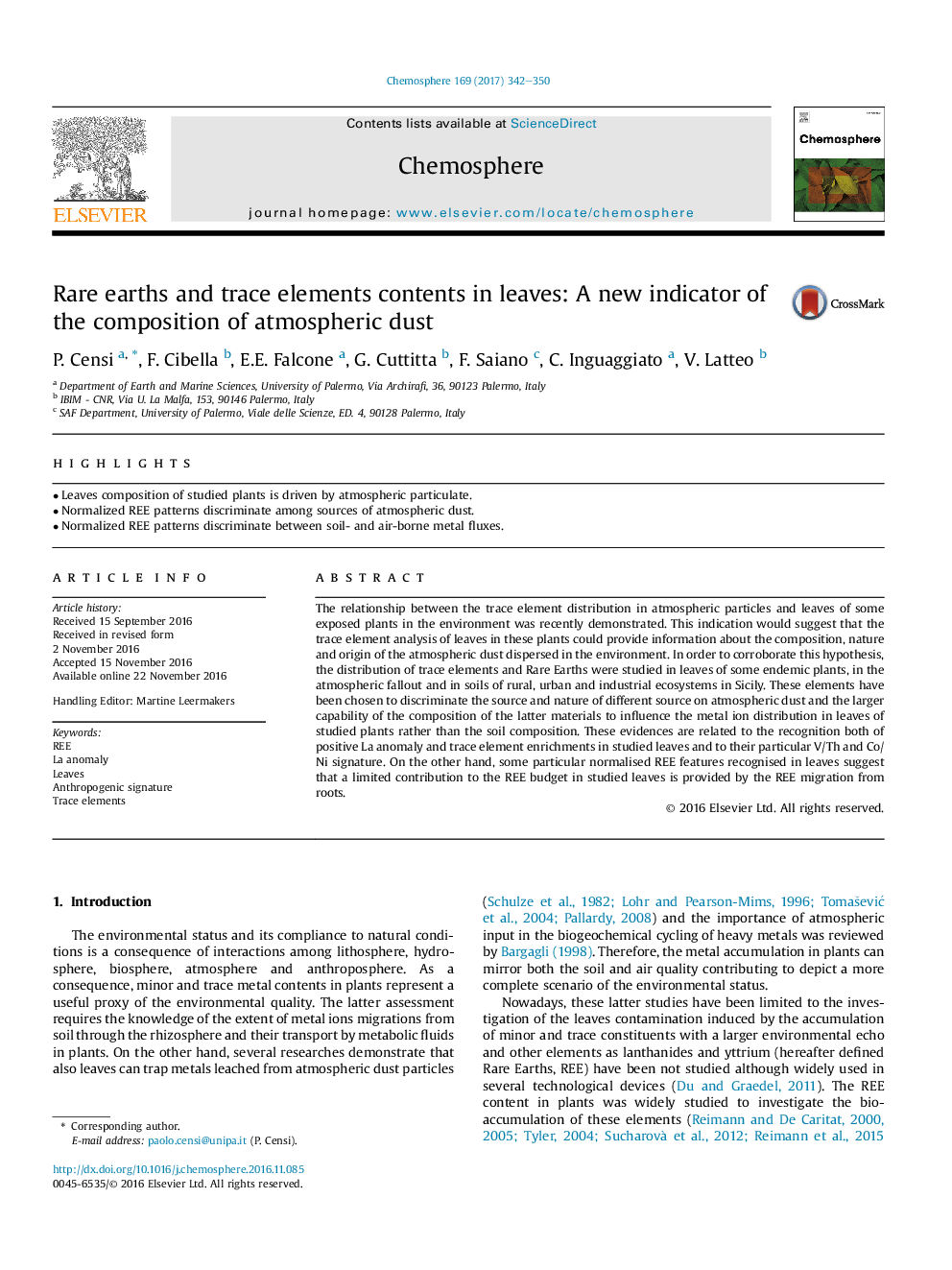| Article ID | Journal | Published Year | Pages | File Type |
|---|---|---|---|---|
| 5746986 | Chemosphere | 2017 | 9 Pages |
â¢Leaves composition of studied plants is driven by atmospheric particulate.â¢Normalized REE patterns discriminate among sources of atmospheric dust.â¢Normalized REE patterns discriminate between soil- and air-borne metal fluxes.
The relationship between the trace element distribution in atmospheric particles and leaves of some exposed plants in the environment was recently demonstrated. This indication would suggest that the trace element analysis of leaves in these plants could provide information about the composition, nature and origin of the atmospheric dust dispersed in the environment. In order to corroborate this hypothesis, the distribution of trace elements and Rare Earths were studied in leaves of some endemic plants, in the atmospheric fallout and in soils of rural, urban and industrial ecosystems in Sicily. These elements have been chosen to discriminate the source and nature of different source on atmospheric dust and the larger capability of the composition of the latter materials to influence the metal ion distribution in leaves of studied plants rather than the soil composition. These evidences are related to the recognition both of positive La anomaly and trace element enrichments in studied leaves and to their particular V/Th and Co/Ni signature. On the other hand, some particular normalised REE features recognised in leaves suggest that a limited contribution to the REE budget in studied leaves is provided by the REE migration from roots.
